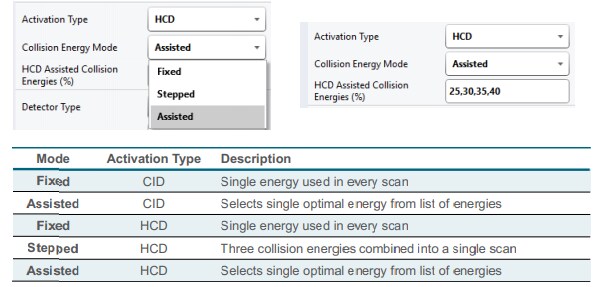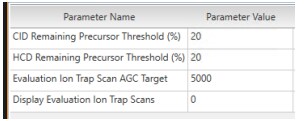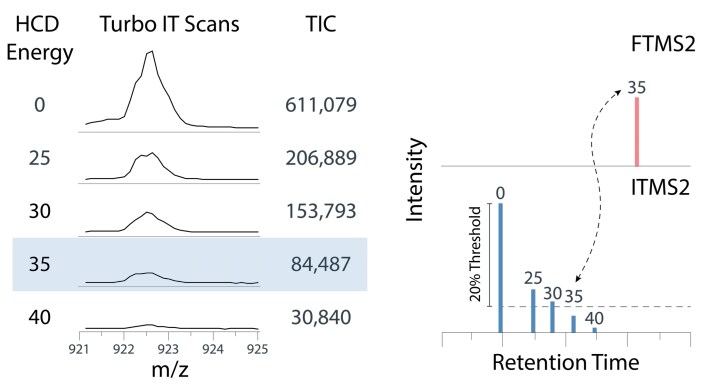Search Thermo Fisher Scientific
Orbitrap IQ-X and Orbitrap ID-X Tribrid Mass Spectrometer Support – Getting Started
Find valuable information.
Optimize your experiments to get the best results- We’ve compiled a detailed knowledge base of the top tips and tricks to meet your analysis needs.
View the relevant questions below:
Having problems with your experiment? Visit
Inclusion and exclusions lists contain m/z values, retention times and intensity threshold.
The three modes offered are:
- ‘Background exclusion workflow’
The background exclusion workflow allows users to generate DDMSn data with automatic application of instrument generated background exclusion list. This allows detection of low level analytes in the presence of a complex background. - ‘Background exclusion and component inclusion workflow’
The background exclusion and component inclusion workflow allows DDMSn data generation with automatic application of instrument generated inclusion and exclusion list. Multiple samples can be submitted in one sequence for their respective inclusion and exclusion list generation followed by one identification experiment using those lists. - ‘Deep scan workflow’
The deep scan workflow allows the generation of DDMSn data with automatic application of inclusion and exclusion lists followed by automated re-injection of the sample. The inclusion and exclusion lists are updated prior to re-injection by moving triggered targets from the inclusion list to the exclusion list allowing deeper interrogation of complex samples.
Internal calibrant (reference) ions are used for real-time fine adjustment of the instrument’s mass-to-charge ratio calibration, enabling a correction for otherwise uncompensated errors that are due to temperature changes scan-to-scan. The purpose of the internal calibration is to ensure high mass measurement accuracy, regardless of the MSn level. This is especially important for low m/z ions over extended periods of time.
Assisted collision energy is now an available feature on all Tribrid instruments, software version 3.1. Through the Method Editor GUI, users can select different ‘Collision Energy Modes’ for both HCD and CID activation types in the ‘Scan Properties’ panel.

Additional settings can be accessed from Tune’s Diagnostic tab: ‘Tools / Method / Assisted Collision Energy Settings.’ The threshold percentage for both HCD and CID can be explicitly set. This is the threshold for selecting the optimal CE when compared to a CE at 0. In addition, the AGC target for the evaluation ion trap scans can be explicitly set. By default, the ion trap scans are not displayed or recorded in the raw file.

The assisted collision energy acquisition strategy uses a series of hidden ion trap scans to determine the optimal CE to use in the subsequent analytical scan. These IT spectra only scan a small mass range around the precursor ion (2 Th) to increase the analysis speed. The TIC of these IT scans is compared to the TIC of an IT scan of 0 collision energy to produce a pseudo-breakdown curve of the precursor. Once the amount of unreacted precursor crosses a user-defined threshold (e.g., 20%), the analytical MS/MS scan uses that ‘optimal’ collision energy.

For more details, download Poster: Real-Time Collisional Energy Optimization on the Orbitrap Fusion Platform for Confident Unknown Identification
To achieve in-depth MSn analysis, this method exhaustively interrogates a precursor using a combination of fragmentation mechanisms, MSn levels, and m/z analyzers. At high MSn levels, the product ion signals can become quite weak. To address this concern, we developed an “MSn Quality Trigger”, which enables the user to trigger complementary ITMSn scans if the corresponding FTMSn scan S/N drops too low. Mass Frontier 8.0 software can curate “MSn library” data into MSn “tree” libraries, and the software can search unknown MSn data against this local library.
Need more information? Contact us ›
For Research Use Only. Not for use in diagnostic procedures.